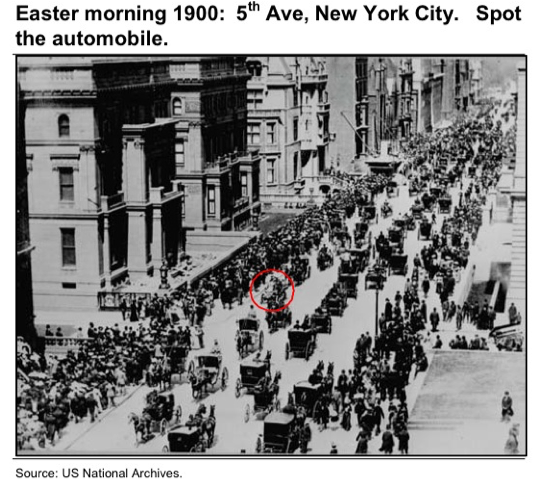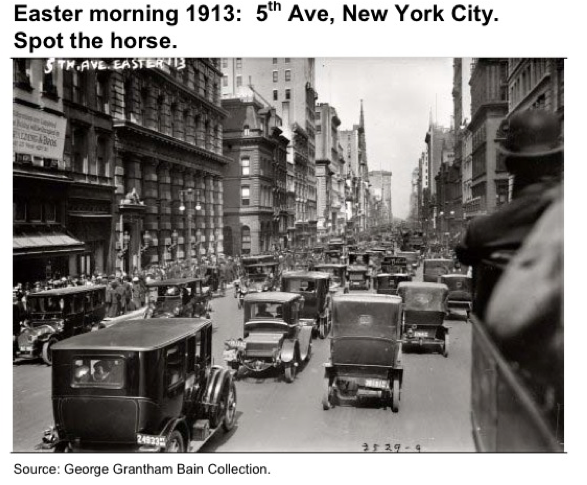How Electric and Driverless Vehicles Will Change Building Design
The world’s first affordable automobile had a dramatic impact on residential design. On October 1, 1908, the first Model T Ford was built in Detroit. Unlike horses, most people could afford to have their own private car and keep it at their home. Between 1908 and 1927, Ford built some 15 million Model T cars.
Moving on from horses and carriages, for over a century homes and apartments have been designed to cater for private car ownership where drivers are human, and vehicles are powered by petrol or diesel.
As people began driving their own private cars, residential property design changed to provide a place to keep the vehicles (garages), and commercial venues had to accommodate individuals leaving their vehicles parked, instead of being dropped off by a carriage that immediately moved on (carparks).
Even cities changed — where cities were once limited to about three kilometres to make the whole city walkable, cars allowed cities to expand further than ever before.


Are we in for another changeover?
Recently, the Australian Labor Party announced that if it wins the election it will implement Australia’s first national electric vehicle policy, setting a national electric vehicle target of 50 per cent of new car sales by 2030.
This goal requires a tectonic shift in vehicle sales. There are just 4000 electric vehicles on the road making up around 0.1 per cent of new cars – that’s about 11,500 to Australia’s total 1.15 million new car sales in 2018.
To become 50 per cent electric more than 564,000 additional electric cars need to be sold per year.
It’s not just electric cars steering the way for the future of driving in Australia. Autonomous vehicles drive themselves from one point to the next in “autopilot” mode using various in-vehicle technologies, and car companies are making multi-billion-dollar bets on them.
When you combine electric vehicles with driverless technology and the trend to a sharing economy, suddenly the vision transitions to shared, electric and self-driving cars. There are several real benefits to this:
Fewer accidents — especially from distractions like mobile phones
Self-driving cars can be programmed to space out automatically, thereby eliminating traffic congestion,
Decreased expenditure on building further road capacity,
No speeding tickets or parking infringements,
Reduced fuel consumption,
Reduced emissions,
An increase in productivity — you can work while you are being driven,
Being dropped off means no hunting for parking
Children, the elderly and the disabled who can’t use cars, and
Elevated speed limits.
Starting in April this year, Perth will become one of only three cities in the world to pioneer the French-designed NAVYA electric Autonom.
The Autonoms have neither steering wheels nor pedals, and use the inputs from a combination of cameras, sensors, GPS, odometry and inertial measurement to feed machine learning programs that guide the vehicles and detect hazards.
For homeowners, it is relatively straightforward to invest in a 240-volt outlet and the electric panel upgrades needed to speed up charging. However, 70 per cent of new residential construction is predicted to be multi-unit dwellings by 2020.
These inner-city homes tend not to have garages or driveways, yet 90 per cent of charging will take place in the home. Residential developers will need to develop new ways to incorporate charging infrastructure into home design to solve this challenge.
For commercial developers, the challenge multiplies with scale. Commercial carparks are already beginning to include charging bays, which do not require much change from standard spaces but do reduce the number of available spaces significantly and requires some level of training by drivers of both petrol and electric cars around their intended use.
A dense network of charging stations will also be needed around cities to allow for rural and regional drivers to get around, and to appease consumer fears about running out of electricity.
Changes are already beginning to surface
The City of Moreland in Melbourne (which takes in suburbs like Coburg, Glenroy and Brunswick) has approached Victorian Planning Minister Dick Wynne to seek to remove the planning law requirement in Victoria for developers to provide at least one car parking space per apartment.
If Labor’s 2030 promise is any indication of the future of vehicles, developers will need to learn how to incorporate electric and autonomous vehicles into their designs seamlessly.
Charging infrastructure can be retrofitted, but it is a significantly more expensive option than building it into a design from scratch.
A key consideration for property financiers going forward will be how well developers incorporate electric and autonomous vehicle charging into their designs.
Today, your interest in electric vehicles may be little more than admiring a model S Tesla when you pull up beside it. However, in the next few years the intersection of government policy and consumer demands will see developers, architects and funders needing to get a clear understanding of how electric and autonomous and electric vehicles will change both residential and commercial design.
For the last ten years Tim Moore has been a director of Dorado Property -— a family-office backed non-bank lender. Moore is a chartered accountant and has had a thirty-five-year career in finance, capital markets and investing.
The Urban Developer is proud to partner with Dorado Property to deliver this article to you. In doing so, we can continue to publish our free daily news, information, insights and opinion to you, our valued readers.













